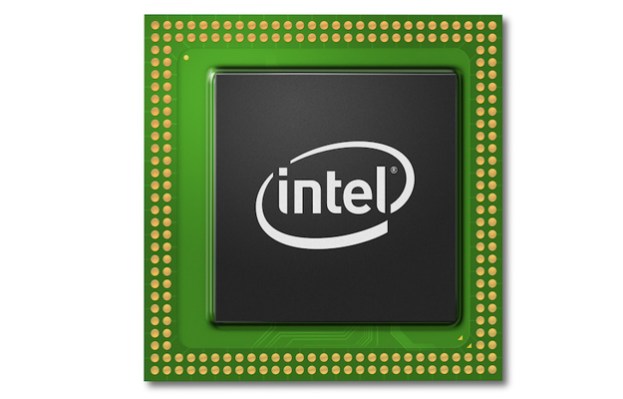
Intel introduced the Atom processor nearly five years ago. It was intentionally designed to enable products that Intel called “mobile Internet devices,” which were more or less tablets that weren’t very popular.
The iPad wouldn’t hit until two years later, however, which meant the possibilities of Atom weren’t explored. Instead, the processor ended up in the tidal wave of netbooks that ambushed the market and then quickly retreated. Atom was caught in the undertow of that receding wave, and hardware manufacturers turned towards ARM processors capable of running Android.
Windows 8 is giving Atom a second chance. Finally, after years of waiting, the products that Atom was designed to enable can be built. Tablets and convertibles with Atom processors are already available, and their numbers are growing. But should you buy a tablet or laptop with an Atom processor, or is the processor popularized by the netbook only suited for that role?
What is an Atom, anyway?
Before we talk about the two types of devices in which Atom appears (besides the netbook), you should first understand a bit about what Atom is and where it came from.
Since the company pushed Core so aggressively, it’s easy to forget they make anything else at all. Atom is quite different from the Intel Core processor you’re likely familiar with. Atom uses its own architecture designed with efficiency, cost, and physical size as priorities. Speed – well, not so much. An Atom processor is around four to six times slower than a third-gen Core i7 in many benchmarks.
Though originally single-core, most of today’s Atom products are dual-core. They have integrated graphics and are fully x86 compatible, which means they’ll run (almost) any software a Core processor can run.
Atom in tablets

Today’s Atom tablets, however, are similar to their Android competitors. They’re generally a bit thicker, often have large displays, but are otherwise hard to tell apart. Windows 8 will be the giveaway, of course, but the new operating system’s touch interface banished the stylus from most devices.
Atom is a good fit for tablets. Though slow compared to an Intel Core processor, it’s quicker (sometimes much quicker) than any ARM processor on the market today. And while the architecture has become faster over the last five years, Window’s system requirements have barely budged. This means the performance of Intel’s least capable of chip is truly adequate. It’s not great, perhaps not even good – but good enough.
Unfortunately there is a skeleton in Atom’s closet: graphics performance. Graphics was a sore spot for the chip when it was released in 2008, and there hasn’t been much improvement. Even the Intel HD 4000 graphics found in a Core processor will knock the socks off Atom. Want to play a 3D game? Too bad. The game probably won’t run; and if it does, it won’t run well. That will be a shock to anyone who has enjoyed immersive 3D gaming on a smaller, less expensive Android device.
Battery life will vary from tablet to tablet but, overall, Atom doesn’t appear to be at a disadvantage. Tablets based on the processor can last between six and ten hours depending on settings and battery size.
Atom in convertibles
Convertible laptops are also seeing Atom’s return, which is no big surprise. Inexpensive convertibles were always the obvious next step for netbooks. Hardware manufacturers were just waiting for Windows to catch up with the touch revolution.
Everything we’ve said about Atom in tablets also applies to convertibles, yet there’s more to consider. Convertibles, unlike tablets, are going to be used at least partially as a traditional PC. That means more time spent with the Windows desktop, more multi-tasking, and heavier use of demanding applications.
This is where Atom starts to stumble. Though quick enough for Web browsing, the processor feels seriously slow when encoding videos or even editing large photos. Tasks that seem to take a blink of an eye on an Intel Core laptop can take five seconds on an Atom system.
Who cares? You will care. Maybe not at first, but after a few hours or weeks the constant lag, lengthy load times, and almost imperceptible stutters will begin to gnaw at you. Atom processors are the perfect way to recreate the feel of computing ten years ago.
All of this might be acceptable if the price was low. That was the premise of netbooks, after all – good enough for the ‘net and cheap enough to fit almost any budget. Modern Atom convertibles don’t fit that mold and often ship with a price between $500 and $800. That’s a lot to spend for an okay tablet that can also be used as a sub-par laptop.
You wait, you win
One of Intel’s most important announcements at CES 2013 was a new line of Atom quad-cores that should be showing up in products by the end of this year. Though details were scarce at the conference, leaks from late 2012 indicate that the Atom quads will have higher clock speeds than current processors and will also include Intel HD 2500 and HD 4000 graphics. If true, the new line of Atoms will be a huge upgrade over what is currently available.
We think that consumers eyeing an Atom-powered tablet or convertible should turn their eyes elsewhere until the new version is available. In the meantime, buyers on a budget should instead consider an Android tablet or an iPad. They provide far more value for your money
Editors' Recommendations
- It’s time to stop ignoring the CPU in your gaming PC
- 4 CPUs you should buy instead of the Intel Core i9-13900K
- How to choose the best RAM for your PC in 2024
- How to check your PC’s specifications on Windows 11
- 4 CPUs you should buy instead of the AMD Ryzen 7 5800X3D


